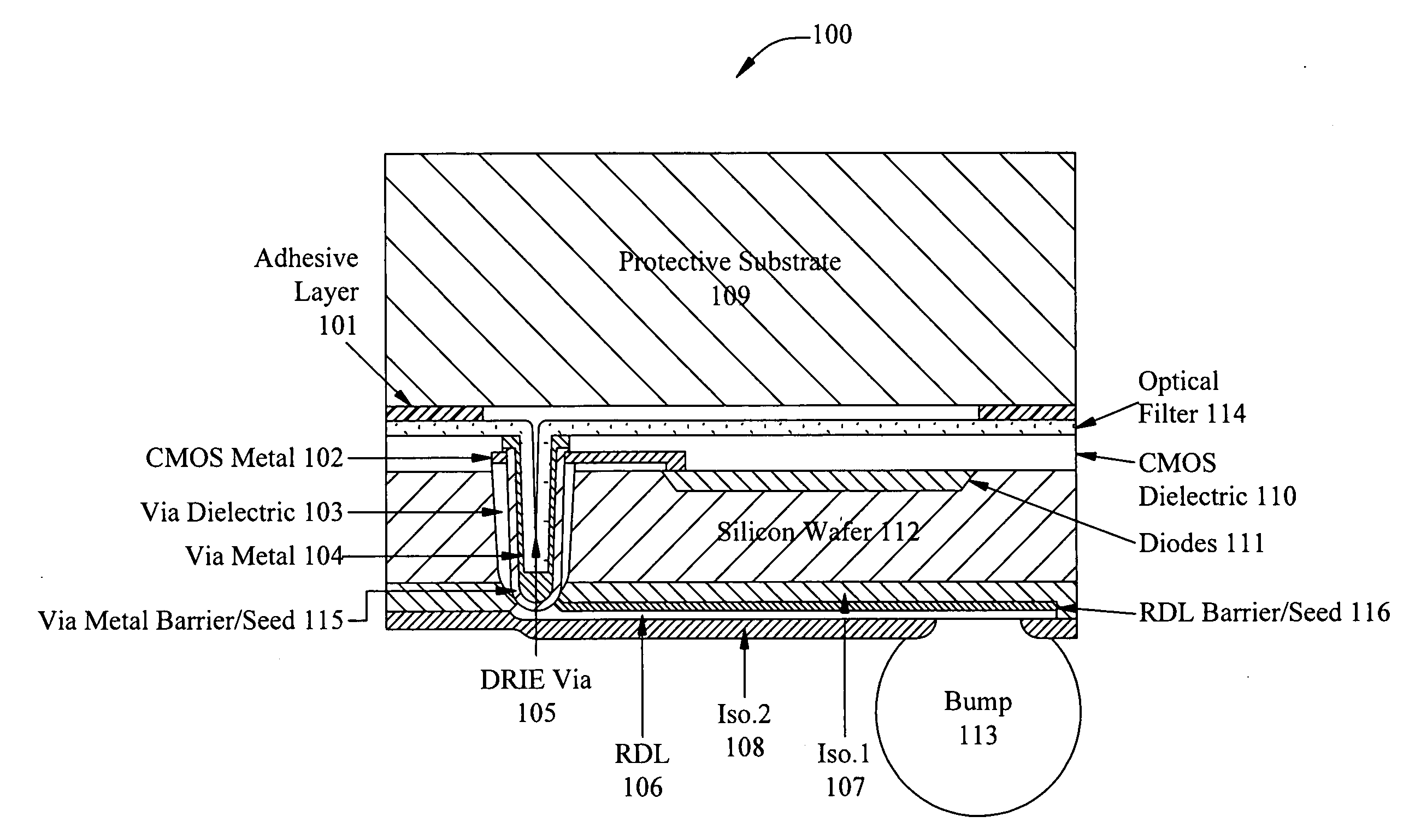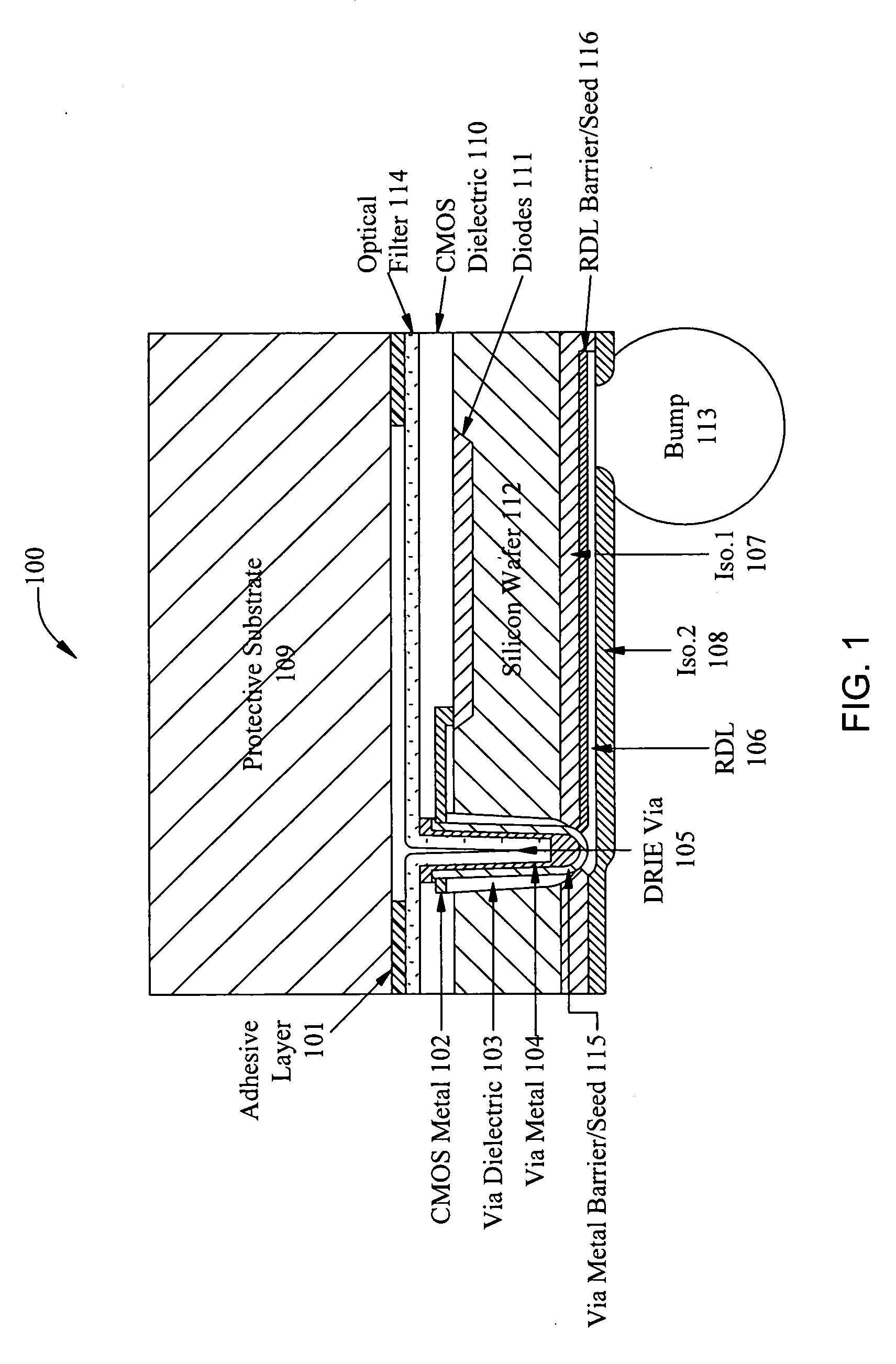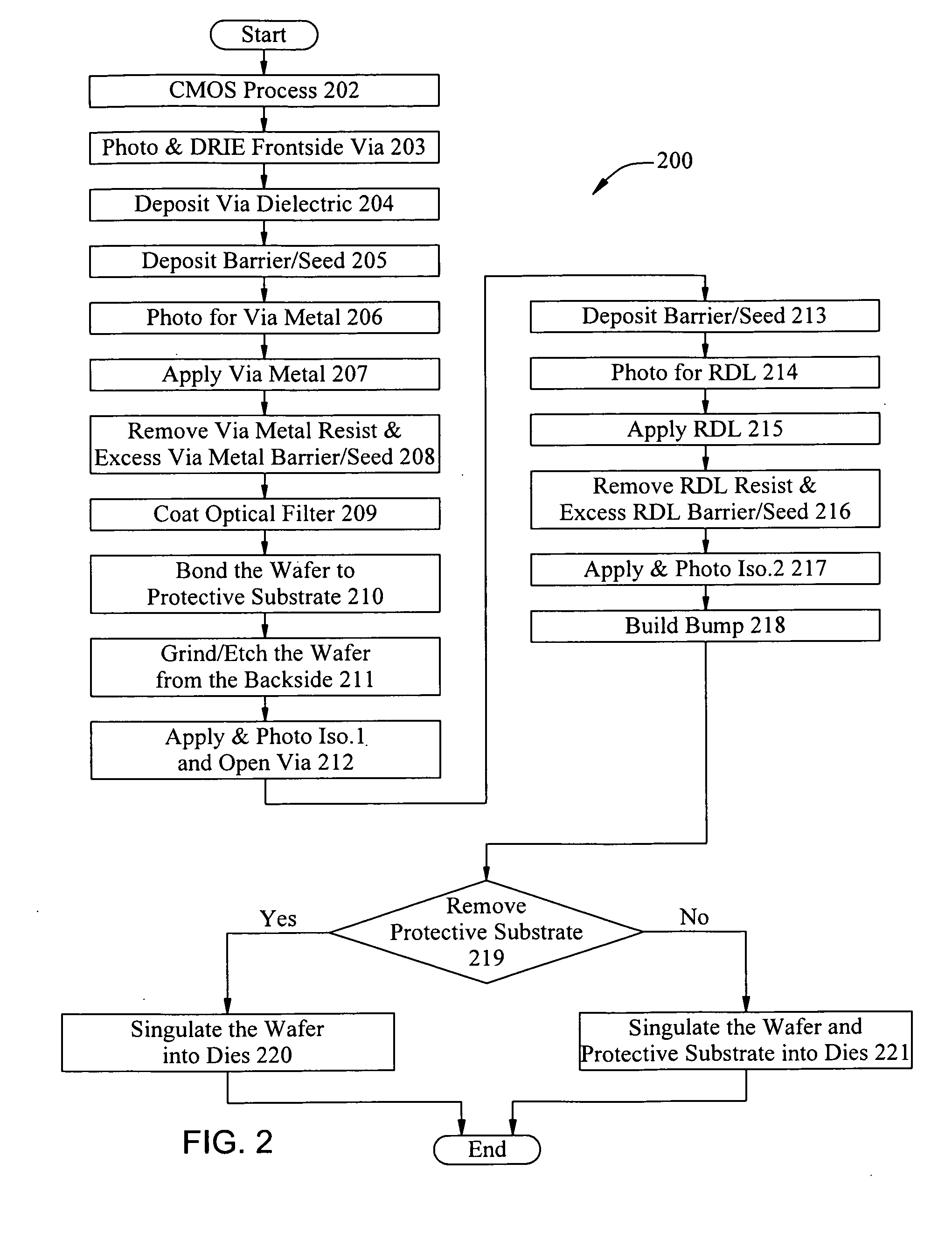Light Sensor Using Wafer-Level Packaging
a technology of light sensor and wafer, applied in the field of semiconductor light sensor, can solve the problems of high power consumption, cost-effective and high-power solutions, and the challenge of cost and power effectiveness in semiconductor techniques, and achieve the effect of cost-effective and reliable solutions
- Summary
- Abstract
- Description
- Claims
- Application Information
AI Technical Summary
Benefits of technology
Problems solved by technology
Method used
Image
Examples
Embodiment Construction
[0019]Embodiments of the present invention provide systems, devices and methods relating to miniature low-power light sensors. The present invention achieves cost and reliability benefits with an efficient integration of Complementary Metal-Oxide-Semiconductor (CMOS) photo diode sensors, the use of TSVs for electrical connectivity, and the selection of solder bumps with certain characteristics. For the electrical connectivity, the invention employs TSVs that connect the light sensitive photo diodes and other devices on the front side to the back side of the die. On the back side of the die, solder bumps are located to facilitate connection with a printed circuit board, or other device. Using specially dimensioned solder bumps for wafer bumping eliminates the need for underfill, e.g. filling of the space between the chip and the PCB, and results in a cost-effective and reliable solution. Additionally, in order to ensure optical access to the sensor, the present invention employs an o...
PUM
 Login to View More
Login to View More Abstract
Description
Claims
Application Information
 Login to View More
Login to View More - R&D
- Intellectual Property
- Life Sciences
- Materials
- Tech Scout
- Unparalleled Data Quality
- Higher Quality Content
- 60% Fewer Hallucinations
Browse by: Latest US Patents, China's latest patents, Technical Efficacy Thesaurus, Application Domain, Technology Topic, Popular Technical Reports.
© 2025 PatSnap. All rights reserved.Legal|Privacy policy|Modern Slavery Act Transparency Statement|Sitemap|About US| Contact US: help@patsnap.com



